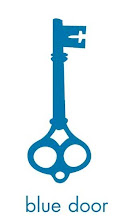To listen to Publisher Patrick Janson-Smith reading some fine examples from Mots d'heures, log on to The Guardian website
http://www.guardian.co.uk/books/2009/nov/13/jack-and-jill
Monday, 30 November 2009
Friday, 20 November 2009
Pourquoi les homophones?

Ask anyone to define “homophone” and chances are they will a) look at you as if you have fallen out of a tree, and, b) be unable to give you an answer. Linguistic terms are generally consigned to the area of the brain housing other nuggets of redundant school knowledge such as the complete noble gases, a conjugation of être and the Fibonacci sequence. We all know that we should remember such facts (if only for vital pub quiz answers) but most of us never do. The homophone is however rather useful and I intend to explain why. Shakespeare would never have arisen to the dizzy heights of fame had he not known how to wield a homophone or two. A virtuoso of the sixteenth century pun, he paved the way for this linguistic conceit to make its way into every corner of modern literature. The oft-ignored part of the Cobbler in Julius Caesar gives us the best example, ‘I am but as you would say a cobbler…a mender of bad soles.’ Little did the Cobbler know how many thousands of students would ponder this very phrase, dutifully recording its dual meaning. Years later, the very same people emblazon on-trend phrases such as “Give peas a chance” on T-Shirts and walls, unsure as to “the exact term” for such hilarity but confident in its linguistic prowess.
Now that we have got our heads around the homophone in English, imagine what happens when you translate into French…poetry. Cynics amongst you may think it cannot be done but in 1967 a little book named Mots d’heures: gousses, rames was published to the glee of dinner party guests across the land. Luis d’Antin van Rooten transformed forty well-known English nursery rhymes into French poetry all thanks to the humble homophone. The trick of the poems was to read phonetically in the manner of Molière, and slowly but surely the English rhyme would emerge. Here’s an example:
Lille beau pipe
Ocelot serre chypre
En douzaine aux verres tuf indemne
Livre de melons un dé huile qu’aux mômes
Eau à guigne d’air telle baie indemne.
Imagine the excitement when Blue Door decided to re-publish this forgotten classic much to the cheer of van Rooten devotees. Published in time for Christmas, this collection of j’aime se will have your sides splitting quicker than you can say ‘Vive les homophones!’
Monday, 16 November 2009
Welcome one and all to the Blue Door books blog. Blue Door is a small imprint which publishes 12 books a year. We publish first-time authors of literary commercial fiction and several non-fiction titles. Our blog is a great space in which to tell you about forthcoming Blue Door titles, share opinions on book news and talk about great fiction in general.
Subscribe to:
Comments (Atom)

